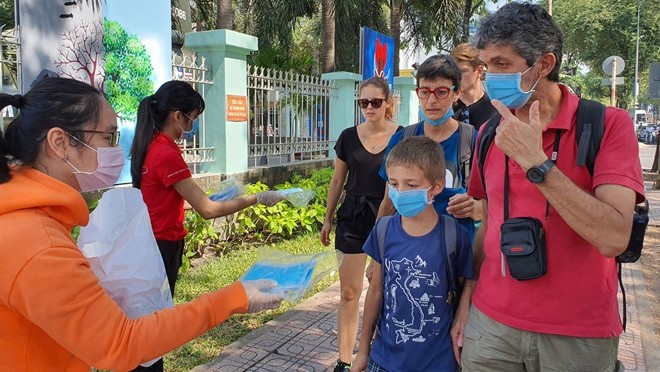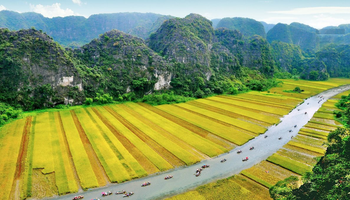Vietnamese tourism was no exception; however, many signals forecasting a stronger breakthrough of the “smokeless industry” in the near future have been shown amidst the epidemic season.
According to the United Nation World Tourism Organisation (UNWTO), the number of international visitors to Vietnam will decrease by 20%-30% in 2020 due to the Covid-19 epidemic, equaling a reduction of around US$300-US$450 billion in revenue. The loss is very severe as the 2009 economic crisis reduced international arrivals by 4% and this rate was 0.4% during the SARS epidemic in 2003.
During the early stages of the anti-epidemic campaign, when all 16 first patients were cured and no new infection cases were reported, many people expected that the tourism sector could soon recover. However, with more complicated developments later, everyone realised that the sector would need longer in "hibernation". The relevant agencies and enterprises were forced to postpone many stimulus campaigns and response solutions to ensure the safety. All transportation and serving activities have been “frozen” with the goal of placing tourists’ health and life first. The situation required the tourism sector to longer-term scenarios and steps. Amidst this difficult reality, Vietnam has expressed its determination to build the image of a safe destination, particularly aimed at the period after the pandemic is controlled.
The Ministry of Culture, Sports and Tourism (MoCST) has sent a document to the Ministry of Planning and Investment to propose more measures to remove difficulties for the tourism sector such as financial aid packages for tourism enterprises through the form of “tour voucher”, policies to support medium and small sized enterprises, homestay owners and workers who lost their jobs due to the impact of the epidemic. In addition, the MoCST highlighted the response scenarios in accordance with the development of the epidemic. Accordingly, once Vietnam announces the end of the pandemic, the tourism sector will focus on stimulating domestic demand with the strong participation of localities, transport enterprises, travel businesses and agencies; paying much attention to attracting more tourists and combining the working purpose of those who participate in either meetings, incentives, conferences or events (MICE) to travel.
It is predicted that Asian countries will probably overcome the epidemic soon. Therefore, in a scenario that Vietnam and some other countries in the region announce the epidemic’s end, the tourism sector will boost communications to introduce a “safe and attractive Vietnam”. On the basis of proposing the Government to consider the policies to create favourable conditions for international visitors to Vietnam, the market of international tourists to the country will be restructured.
Once the world is out of epidemic, Vietnamese agencies will enhance promotional activities and the application of information and technology in communication and the development of new tourism products as well as widely implement the stimulus packages for both domestic and international markets. The sector will also propose the Government consider policies to create favourable conditions for international tourists in Vietnam, including an increase of flight frequency, the opening of more air routes and visa exemptions. It must be seen that all scenarios have been outlined clearly.
Up to now, it can be affirmed that Vietnam has been on the right track and implemented effective prevention and control measures of Covid-19, which affirm the position of a country that always places the community’s health first. This factor will help Vietnam gain more “plus marks” from international visitors. In the context of a global pandemic, the countries that control it soon and recover quickly will prove their governments always put the people’s health and welfare first. They will also become the leading safe destinations for international travelers after the world has faced a pandemic that has left so much damage both in economic and human terms.
Vietnam is becoming a good example of national epidemic prevention in the world, so the country will have a relatively larger comparative advantage over countries with similar natural resources in the region. In addition, foreign tourists’ statements that they feel secure during their time in Vietnam amidst the epidemic have become a channel to introduce Vietnam as a safe, friendly and hospitable destination. It may take two years or longer for Vietnamese tourism to fully recover; however, the spectacular advances of the country's smokeless industry in the next years are palpable.
















